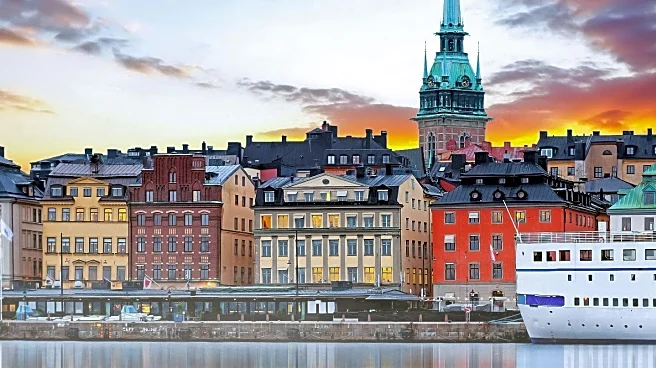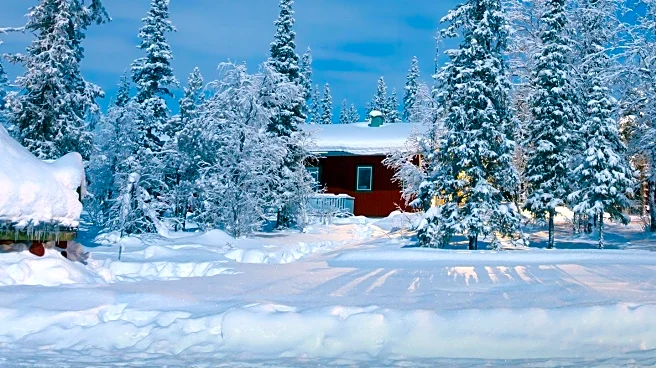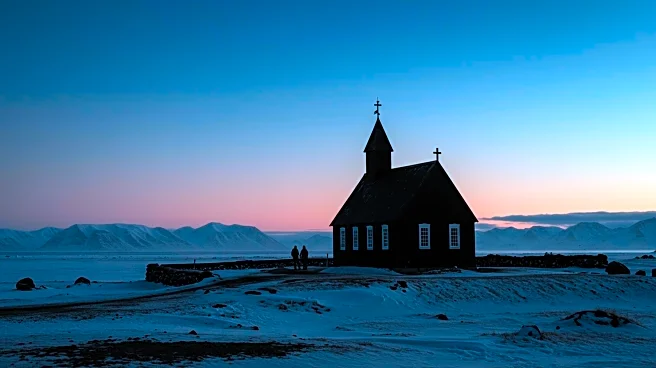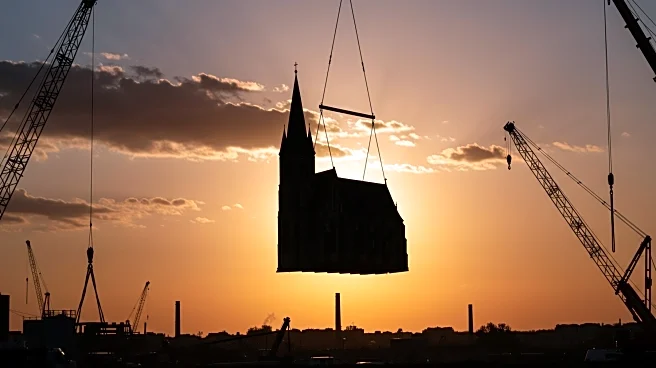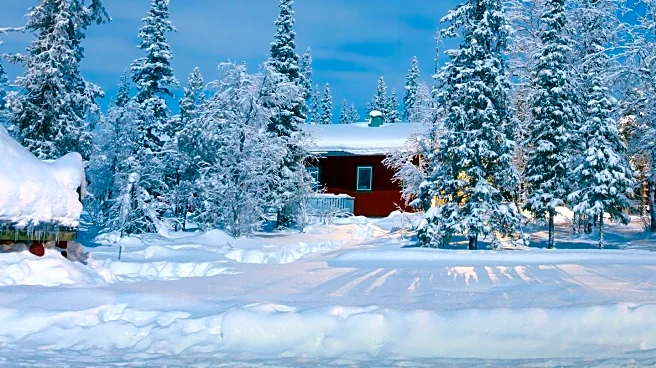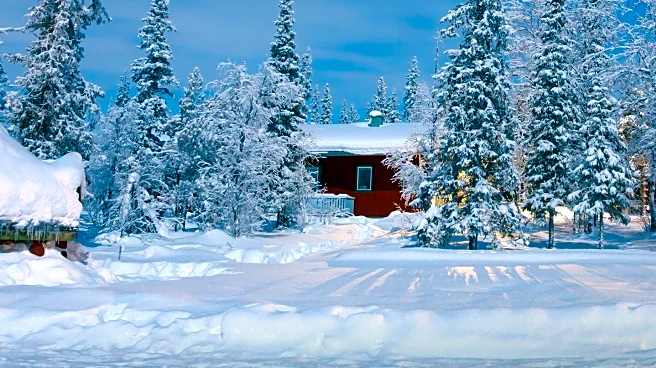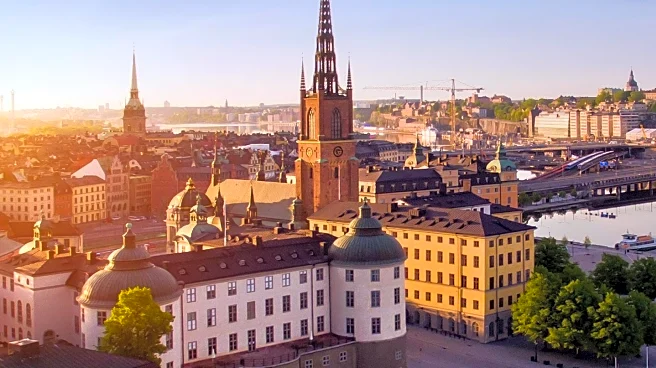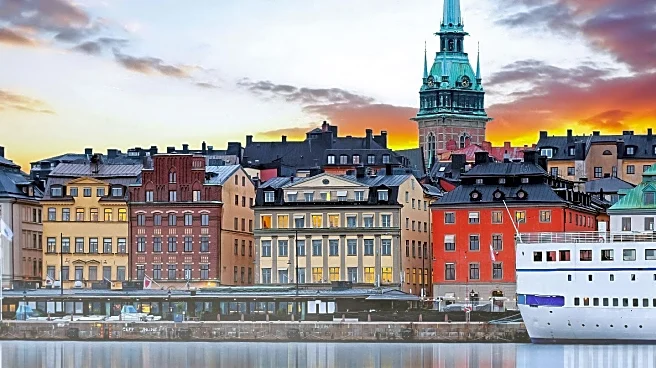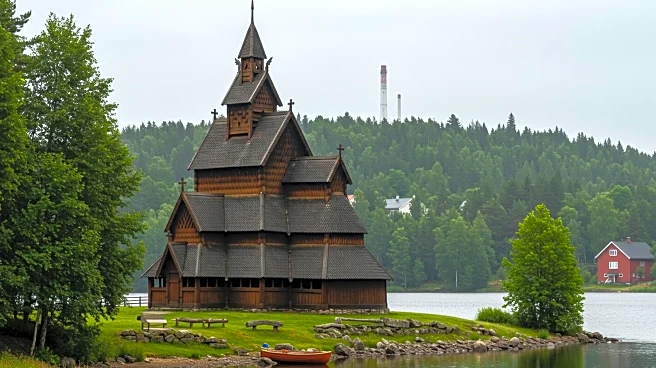Rapid Read • 9 min read
The historic Kiruna Church in Sweden, a wooden Lutheran church with significant cultural ties to the Sami people, has been relocated as part of the town's move due to the expansion of the world's largest underground iron-ore mine. The church, originally built in 1912, was moved approximately three miles east to a new city center. This relocation is part of a broader effort to preserve the town's cultural heritage while accommodating the mining operations. The church is known for its inclusive ethos, incorporating minority languages such as Northern Sami, Finnish, and Meänkieli into its services. The building's design reflects Sami cultural elements, and it features a unique altarpiece by Prince Eugen, emphasizing nature over traditional religious imagery.
AD
The relocation of Kiruna Church is significant as it highlights the ongoing efforts to balance industrial development with cultural preservation. The church's move is a testament to the importance of maintaining cultural heritage in the face of economic expansion. This event underscores the broader challenges faced by indigenous communities, like the Sami, in preserving their cultural identity amidst external pressures. The church's inclusive practices and its role in the community serve as a model for integrating minority cultures into mainstream religious and social practices. The relocation also reflects Sweden's commitment to addressing past injustices against the Sami people, as evidenced by the Church of Sweden's formal apologies and the establishment of a truth commission.
Following the relocation, the Kiruna Church is expected to reopen to worshippers by the end of next year. The Swedish government's truth commission is set to conclude its work by December 1, addressing the historical trauma inflicted on the Sami people by past policies. The church's continued emphasis on inclusivity and cultural representation will likely play a role in healing and reconciliation efforts. Additionally, the relocation may prompt further discussions on how to effectively balance industrial growth with the preservation of cultural and historical sites, potentially influencing future policy decisions in Sweden and beyond.
The relocation of Kiruna Church also raises questions about the ethical responsibilities of corporations and governments in preserving cultural heritage. The involvement of state-owned mining company LKAB in the church's original construction and its current relocation highlights the complex relationship between industry and cultural preservation. This event may inspire other communities facing similar challenges to seek innovative solutions that honor both economic and cultural imperatives. Furthermore, the church's move could serve as a catalyst for broader discussions on the rights of indigenous peoples and the importance of safeguarding their cultural practices in a rapidly changing world.
AD
More Stories You Might Enjoy
